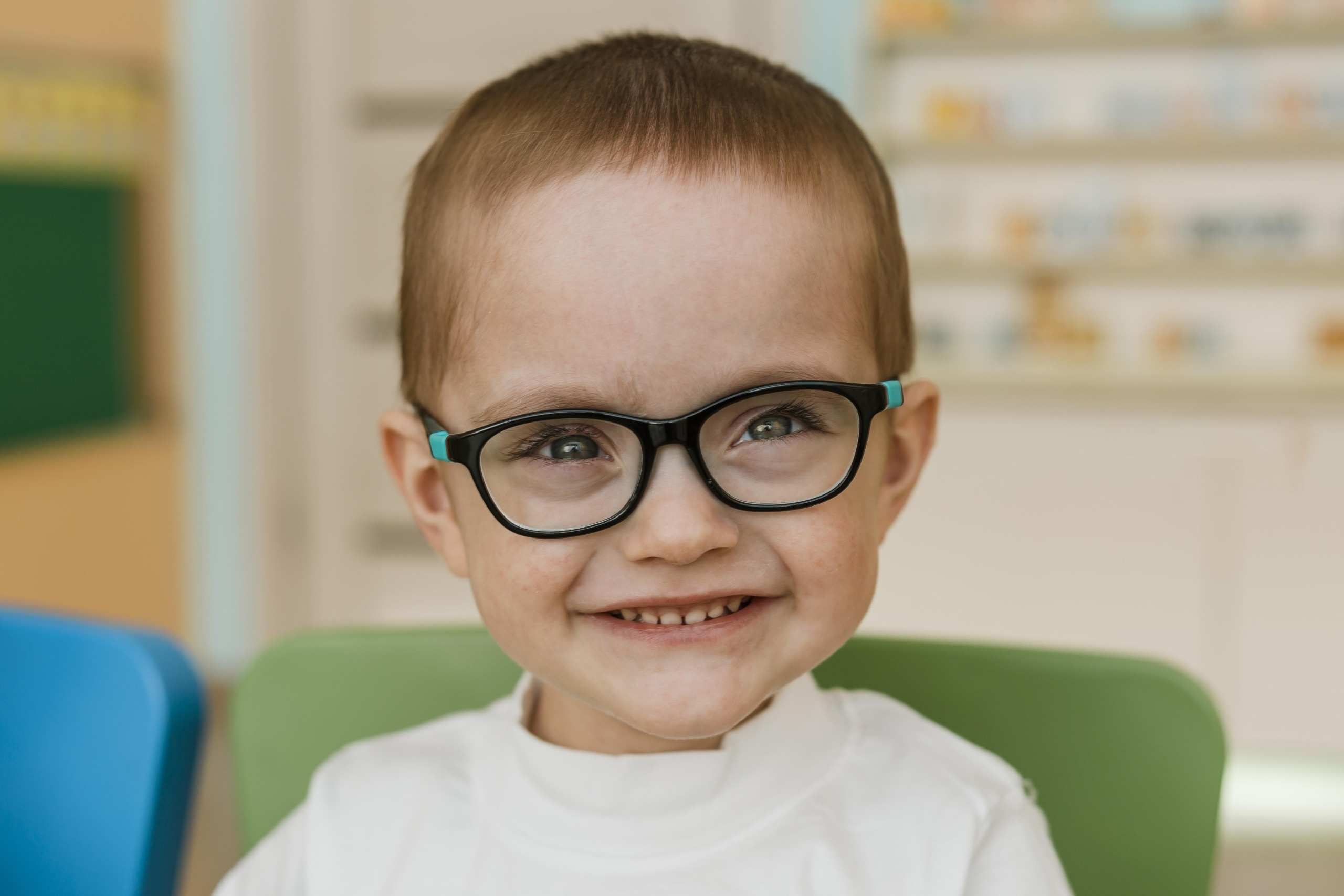Early detection and intervention pave the way to brighter visions for our little ones! 💙
Amblyopia, commonly known as “lazy eye,” is a condition that occurs when there is a disruption in the normal development of vision during early childhood. It results in reduced vision in one eye that cannot be fully corrected with glasses or contact lenses. This condition is not related to any eye health problems; rather, it is a neurological condition where the brain and the affected eye do not work together properly.
Prevention and Management:
- Early Detection:
- Regular eye exams for infants and young children are crucial. Detecting and addressing conditions like strabismus, refractive errors, or visual obstructions early can prevent the development of amblyopia.
- Vision Screening:
- Routine vision screenings during well-child check-ups, preschool, and school years help identify any signs of amblyopia or other vision issues.
- Correction of Refractive Errors:
- Correcting significant differences in refractive errors between the eyes with glasses or contact lenses can help prevent amblyopia.
- Eye Patching or Atropine Drops:
- For children with amblyopia, covering the stronger eye with an eye patch or using atropine eye drops to blur the vision in the stronger eye can encourage the use and strengthening of the weaker eye.
- Vision Therapy:
- Vision therapy exercises may be recommended to improve eye coordination and strengthen the visual system.
- Addressing Underlying Conditions:
- If amblyopia is caused by conditions like strabismus or cataracts, addressing these underlying issues through surgery or other interventions is essential.
- Regular Follow-up:
- Consistent monitoring of a child’s vision and compliance with prescribed treatments are crucial to ensure effective intervention and improvement in vision.
- Parental Education:
- Educating parents about the importance of early eye exams, signs of potential vision issues, and the need for consistent eye care helps in the prevention and early detection of amblyopia.
- Good Eye Health Habits:
- Encouraging good eye health habits, such as limiting screen time, taking breaks during near activities, and promoting a balanced lifestyle, contributes to overall visual health.
Preventing amblyopia involves a combination of early detection, prompt intervention, and ongoing management. Parents and caregivers play a key role in ensuring that children receive regular eye check-ups and follow recommended treatments. If there are concerns about a child’s vision, consulting with a healthcare professional or eye care specialist is crucial for proper evaluation and guidance.


Leave a Reply
Want to join the discussion?Feel free to contribute!